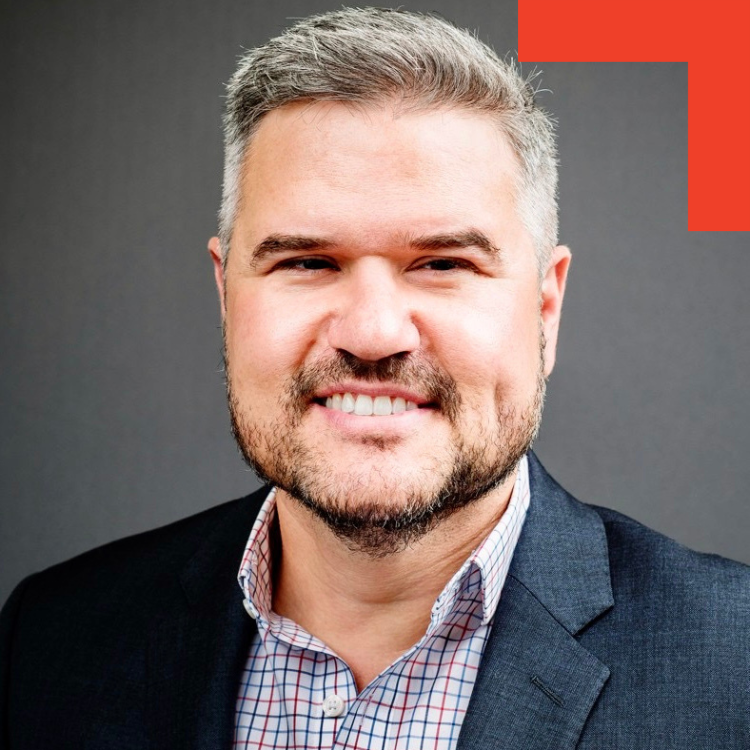Unlocking the Power of Podcasting in the Logistics Industry
Networking and thought leadership are crucial in today’s logistics landscape. They engage your target audience, create brand awareness, and keep you connected with industry peers.

As logistics professionals continually seek new ways to stay informed and share their expertise, podcasting emerges as a trendy and powerful tool for achieving these goals. It offers logistics companies and professionals a platform for thought-provoking discussions and valuable insights. However, podcasting is not an easy media format to succeed in, as Blythe Brumleve, founder of Brumleve Brands, points out.
“Over 90% of podcasts never make it past 10 episodes; the start and fail rate is very high, because I think people have unrealistic expectations,” she noted. “When they start a show, they think that they’re going to get hundreds of 1000s of listeners, they’re going to get sponsors off the jump. That’s not how this works.”
Therefore, as the logistics industry embraces this medium, it’s essential to understand the key elements that contribute to a successful podcast.
In our newly launched podcast, “Fr8 Marketing Gurus,” Virago CEO Jennie Malafarina spoke to industry podcast expert Brumleve about the crucial aspects to starting, distributing, and growing a podcast. We’ll explore her tips in this blog, but you can also hear them straight from the expert herself here.
The Top 5 Tips for Podcasting Success
1. Just do it. Starting is the most challenging but rewarding step. As Brumleve states, there’s a pathway to get to success, and the first step on that journey is recording your first episode. The biggest hurdle is holding yourself back because you’re afraid of failure or not being perfect.
“The fear of perfection holds people back so much,” Brumleve noted. “… But if you’re an obsessed psychopath like me, who are like I don’t care if two people listen; that’s two more people that listen to my show that I technically gave a keynote to. That’s the way I see it is that I have an opportunity to give a keynote to a target audience that hopefully will care.”
2. Have a plan for content distribution. Effective distribution is critical. Brumleve emphasizes, “If you’re not going to distribute it properly, then there’s really no sense in even doing it. Because with podcasts in general, it’s very tough to get discovered.”
Therefore, it is best to leverage multiple channels such as email, social media, and YouTube to maximize reach and attract new listeners. Establishing a strong presence on YouTube can also tap into the platform’s recommendation algorithm, exposing your podcast to a broader audience.
By consistently sharing high-quality content and engaging with your listeners across various platforms, you can build a loyal following and establish your podcast as a go-to resource in the logistics industry.
3. Provide the content your audience wants. Tracking the source of your email sign-ups and asking listeners how they discovered your podcast can provide valuable insights. This information helps refine your content strategy and create episodes that address your listeners’ most pressing issues and interests.
“We have a main catch-all form, but also, in our forms, we have a source URL, and that source URL can tell me the URL that that person signed up for the email from,” Brumleve noted. “That is a tremendous data point for me, because then I’m able to go in and see that it was a trucking-related article, so maybe they want more trucking-related episodes. And so, setting up this framework of being able to collect the data and then analyze the data and then … [it’s] getting additional landing pages specifically geared around topic clusters or topic categories. … One of our first ones was women in logistics. So, we took all of our episodes from interviews with other women, and we collected them and we put them into a single podcast player and put them on a single landing page and now that page is one of our top pages.”
4. Use technology and AI tools to streamline production and enhance content quality. Tools like Opus Clips and Otter AI help create short, engaging clips and accurate transcriptions, which can be shared on social media. Brumleve mentions, “We use Otter.ai, where we upload a copy of the final transcript from each episode. The idea is to build out our podcast library, enabling users to find relevant episodes quickly.”
AI tools can remove filler words from clips and generate engaging captions, making your content more accessible and appealing to social media users. Additionally, AI chatbots can guide listeners to specific episodes based on their interests, enhancing user experience and engagement.
5. Pay attention to the small details. Small details can significantly impact your podcast’s success. Even something as simple as good lighting can make a difference in how people engage with your podcast.
But it’s really more about the content. Therefore, simply adding captions to your video content is a difference-maker, because a lot of people view social media on mute. Optimizing thumbnails and titles for discoverability can attract new listeners, as well. And when it comes to thumbnail images, Brumleve stresses to “never have more than three words on the thumbnail image itself because most of the views come from the recommendations column. … So you want people to be able to glance and know what the video is about. Also, the intro of the video has to match with whatever the title is in the few words that you use in your thumbnail graphic, because people have to be reassured that they clicked on the right thing and that they’re going to be shown what they intended or what they thought was going to be shown when they clicked on the video originally.”
Testing different email subject lines can improve open rates, ensuring your content reaches a larger audience. Exploring new formats, such as short-form video content on TikTok and YouTube Shorts, can expand your reach to younger audiences and showcase your expertise in a fresh and engaging way. By consistently delivering high-quality content that addresses your target audience’s needs and interests, you can build a strong reputation and establish yourself as a thought leader in the logistics industry.
Pursuing Podcasting
To succeed with a logistics podcast, you have to be willing to learn and adapt. By starting with a clear vision and a commitment to providing value to your listeners, you can create a strong foundation for your podcast and gradually refine your approach over time.
Time is a precious commodity, and podcasting offers a convenient and engaging way to stay informed and connected. By strategically distributing content, engaging with listeners, using the right tools, and paying attention to and tweaking the small things as you grow, logistics professionals can unlock the full potential of this powerful medium.
As the industry continues to evolve, those who effectively leverage podcasting will be well-positioned to share their insights, build their personal brands, and contribute to the ongoing conversation shaping the future of logistics. Whether you’re a seasoned industry veteran or a newcomer looking to make your mark, podcasting provides a unique opportunity to connect with your peers, showcase your expertise, and drive meaningful change in the dynamic world of logistics.
Learn more from Brumleve by watching the full episode here: https://youtu.be/iCCLJUCdymw?si=LVFTEGTKQLswAlwg
Let's Talk.
Our team keeps tabs on podcasting best practices. Reach out to start the conversation around podcasting, if it’s right for you, or if you’d like to be a guest on our show.


